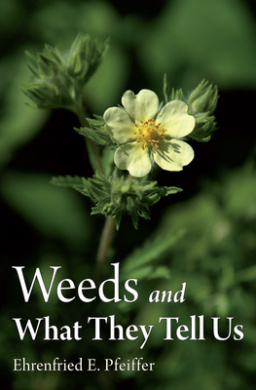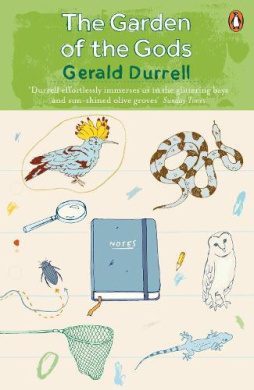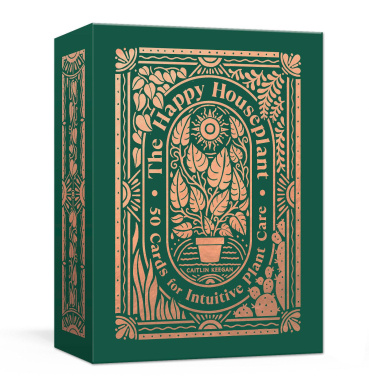Description
Research on the hormonal control oflactation – the subject of this monograph – has long been the major interest of this laboratory. Studies were initiated in the mid 1930s by the late Professor S. 1. Folley, FRS, who directed the work with immense enthusiasm and devotion until his untimely death in 1970. This fruitful area of basic and applied research has, in recent years, attracted widespread attention; there have been many exciting events and developments with a dramatic increase in the number of publications. These events are diverse and include the identification, isolation and sequencing of human prolactin; the identification and isolation of placentallactogens in several ruminant species with recognition of their importance in mammary growth and differentiation; the introduction of highly sensitive bioassay, radioimmuno- and radioreceptor-assay techniques for mammotrophic hormones; the growing clinical appreciation of the immunological and nutritional importance of colostrum and milk to the newborn; the intensification of studies on normal mammogenesis to establish a sound basis for studies on mammary cancer; and the exploitation of the mammary gland, with its characteristic differentiation patterns and multiple synthetic abilities, as a valuable tissue for the investigation of basic mechanisms involved in the synthesis under hormonal control of enzymes and secretory proteins; and for the study of hormone – receptor interactions. 1. Introduction.- A. Importance of Milk.- I. Milk and the Nurture of the Young.- II. Milk as an Item of the Post-weaning Diet.- 1. Development of Dairying.- 2. Value of Milk in the Diet.- B. Lactation: Physiological Requirements and Demands.- I. Mammary Growth.- II. Milk Secretion.- III. Milk Removal.- IV. Behavioural Adaptations.- V. Metabolic Adaptations.- VI. Lactation in Prototherian and Metatherian Mammals.- VII. Duration of Lactation.- C. Lactation and Reproductive Cycle.- References.- 2. Properties and Regulatory Mechanisms of the Mammotrophic Hormones of the Anterior Pituitary and Placenta.- A. Isolation and Properties of Growth Hormone and Prolactin.- B. Isolation of Placental Lactogens.- C. Biological Effects.- D. Immunology.- E. Structure-Activity Relationships.- I. Basic Considerations.- II. Enzymic Digestion and Investigation of Active Peptide Fragments.- III. Chemical Modification.- 1. Disulphide Bonds.- 2. Tryptophan.- 3. Tyrosine.- 4. Methionine.- 5. Conclusions.- F. Peptide Hormone Heterogeneity.- G. Biosynthesis.- H. Regulatory Mechanisms.- I. Prolactin.- 1. Afferent Pathways and Neurotransmitters Involved in the Release of Prolactin.- 2. Prolactin-Releasing Factor.- 3. Role of Endogenous Opioid Peptides in Prolactin Secretion.- 4. Prolactin-Inhibiting Factor.- 5. Effect of Endogenous Hormones on Prolactin Secretion.- II. Growth Hormone.- 1. Extrahypothalamic Brain Areas and Neurotransmitters Involved in GH Secretion.- 2. Growth Hormone-Releasing Factor.- 3. Growth Hormone Release-Inhibiting Hormone (Somatostatin).- 4. Mode of Action of the Hypothalamic Regulatory Hormones.- 5. Effect of Endogenous Hormones on GH Secretion.- III. Placental Lactogen.- 1. Relation Between Placental Lactogen Production and Placental Weight in Sheep, Goats and Monkeys.- 2. Acute Changes in Placental Lactogen Levels.- 3. Placental Lactogen and Circulating Levels of Metabolites.- 4. Placental Lactogen and Catecholamines.- 5. Other Factors Investigated.- References.- 3. Growth and Development of the Mammary Gland.- A. Mammary Development in the Embryo and Fetus.- I. Stages of Development.- II. Experimental Analysis of Fetal Mammary Gland Development.- 1. Mammary Gland Morphogenesis In Vitro.- 2. Epithelial-Mesenchymal Interactions in Mammary Gland Development.- 3. The Role of Mesenchyme and the Response of Mouse Mammary Rudiments to Testosterone.- 4. Other Effects of Steroid Administration to the Fetus and Neonate.- 5. Response of Fetal Mammary Glands to Other Hormones.- B. Mammary Gland Development in Virgin, Pregnant and Lactating Females.- I. Methods of Evaluating Mammary Growth.- II. Stages of Development.- 1. Monotremes and Marsupials.- 2. Primates.- a) Rhesus Monkey.- b) Man.- 3. Lagomorpha.- a) Rabbit.- 4. Rodentia.- a) Hamster.- b) Rat and Mouse.- c) Guinea-pig.- 5. Carnivora.- a) Dog.- 6. Perissodactyla.- a) Horse.- 7. Artiodactyla.- a) Pig.- b) Cow, Sheep and Goat.- C. Involution.- D. Plasma Levels of Hormones Involved in Mammogenesis: Steroid Hormones of the Ovary, Adrenal Gland and Fetoplacental Unit.- I. Monotremata.- 1. Ornithorhynchidae.- a) Platypus.- II. Marsupialia.- 1. Phalangeridae.- a) Brush-tailed Possum.- 2. Macropodidae.- a) Tammar Wallaby.- III. Chiroptera.- 1. Phyllostomatidae.- a) California Leaf-nosed Bat.- IV. Primates.- 1. Cebidae.- a) Sqirrel Monkey.- 2. Cercopithecidae.- a) Rhesus Monkey.- b) Bonnet Monkey.- c) Japanese Monkey.- d) Baboon.- 3. Pongidae.- a) Chimpanzee.- 4. Hominidae.- a) Woman.- V. Lagomorpha.- 1. Leporidae.- a) European Hare.- b) Rabbit.- VI. Rodentia.- 1. Sciuridae.- a) Grey Squirrel.- 2. Cricetidae.- a) Golden Hamster.- 3. Muridae.- a) Rat.- b) Mouse.- 4. Caviidae.- a) Guinea-pig.- b) Cuis.- VII. Carnivora.- 1. Canidae.- a) Dog.- b) Blue (Arctic) Fox.- c) Red Fox.- 2. Mustelidae.- a) Ferret.- b) Mink.- c) Spotted Skunk (Western Form).- 3. Felidae.- a) Cat.- VIII. Pinnipedia.- 1. Otariidae.- a) Alaskan Fur Seal.- IX. Proboscidae.- 1. Elephantidae.- a) Elephant, African and Asian.- X. Perissodactyla.- 1. Equidae.- a) Horse.- XI. Artiodactyla.- 1. Suidae.- a) Pig.- 2. Cervidae.- a) White-tailed Deer.- b) Roe Deer.- 3. Bovidae.- a) Cow.- b) Goat.- c) Sheep.- XII. General Conclusions.- E. Plasma Levels of Hormones Involved in Mammogenesis: Prolactin, Growth Hormone and Placental Lactogen.- I. Primates.- II. Lagomorpha.- 1. Rabbit.- III. Rodentia.- 1. Hamster.- 2. Mouse and Rat.- IV. Carnivora.- 1. Dogs.- V. Perissodactyla.- 1. Horse.- VI. Artiodactyla.- 1. Pigs.- 2. Cows, Sheep, and Goats.- F. Endocrine Control of Mammary Gland Growth.- 1. Control of Mammary Duct Growth in the Rat and Mouse.- II. Control of Lobulo-alveolar Mammary Growth in the Rat and Mouse: Role of Placental Lactogen.- III. Lactational Mammary Growth in the Rat and Mouse.- IV. Mammary Gland Growth in Rabbits.- V. Mammary Gland Growth in Ruminants.- VI. Mammary Gland Growth in Primates.- VII. Other Factors in Mammary Gland Growth.- 1. Metabolic Hormones.- 2. Is the Effect of Oestrogen on Mammary Tissue Direct?.- 3. Relaxin.- 4. Polyamines.- 5. Chalones.- G. Experimental Induction of Mammary Growth and Lactation.- I. Women.- II. Animals.- 1. Oestrogen Treatments.- 2. Oestrogen-Progesterone Treatments.- 3. Adjunct Treatments.- 4. Levels of Hormones in the Blood.- III. Conclusions.- References.- 4. Lactation.- A. The Secretion of the Mammary Gland: Colostrum and Milk.- I. Nature and Composition.- II. Importance to the Neonate.- 1. Transmission of Immunity.- 2. Transmission of Hormones.- B. Lactogenesis.- I. Terminology.- II. Ultrastructure and Function of Mammary Epithelial Cells.- 1. Changes in Ultrastructure at Parturition and Their Relationship to Milk Composition.- 2. Mechanisms of Synthesis and Secretion.- a) Milk Proteins.- b) Lactose.- c) Milk Fat.- 3. Are Milk Synthesis and Secretion Controlled Independently?.- III. Changes in Mammary Gland Stroma.- IV. Hormonal Mechanisms in the Initiation of Lactation.- 1. Effects of Hormones on Mammary Gland Ultrastructure.- 2. Effects of Hormones on Messenger RNAs for Casein.- 3. Plasma Levels of Hormones and the Onset of Copious Milk Secretion.- C. Maintenance of Lactation.- I. Prolactin.- 1. Effect of Reduced Prolactin on Milk Secretion.- 2. Effect of Milking and Suckling on Prolactin Secretion.- 3. Circulating Prolactin and Milk Secretion.- 4. Increased Prolactin and Milk Secretion.- II. Growth Hormone.- 1. Effect of Milking and Suckling on Growth Hormone Secretion.- 2. Circulating Growth Hormone and Milk Secretion.- III. Thyroxine.- 1. Effect of Thyroidectomy on Milk Secretion.- 2. Effect of Thyroxine and Thyroactive Compounds on Milk Secretion.- 3. Circulating Thyroxine and Milk Secretion.- IV. Insulin.- 1. General.- 2. Circulating Insulin and Milk Secretion.- V. Corticosteroids.- 1. Non-ruminants.- 2. Ruminants.- VI. Oxytocin.- D. Milk-Ejection Reflex.- I. Early Studies on the Nature of Milk Ejection.- 1. Recognition of Milk Ejection.- 2. Milk Secretion and Milk Ejection.- 3. The Neuro-endocrine Reflex.- a) Studies in Animals.- b) Studies in Women.- II. Recent Investigations.- 1. Innervation of the Mammary Gland.- 2. Effective Stimuli.- 3. Afferent Pathways.- 4. Humoral Pathway.- 5. Contractile Tissue.- 6. Species Differences in the Importance of the Milk-Ejection Reflex.- 7. Tap Reflex.- III. Suckling and Nursing.- 1. Mechanics of Suckling.- 2. Frequency of Suckling and Patterns of Nursing.- 3. Relationship Between Suckling-Induced Release of Oxytocin and Prolactin.- E. Disturbances of Lactation.- I. Factors Involved.- 1. Nutritional.- 2. Pharmacological.- 3. Emotional Stress.- II. Mechanisms of Failure.- III. Disturbances in Animals.- IV. Disturbances in Women.- References.- 5. Hormone Assay Techniques Used in the Study of Lactation.- A. Methods of Bio-assay.- I. Growth Hormone.- II. Prolactin.- III. Placental Lactogen.- IV. International Standards for Bio-assay.- B. Radio-immunoassays and Radioreceptor Assays.- I. Iodinated Prolactin and Growth Hormone.- 11. Do RIAs and RRAs for Prolactin and GH Measure the Biologically Relevant Hormone9.- 1. Prolactin RIA.- 2. Prolactin RRA.- 3. Growth Hormone RIA.- 4. Growth Hormone RRA.- 5. Conclusions.- C. Measurement of Prolactin in Milk by RIA.- References.- 6. Hormone Receptors in Mammary Gland and the Mechanisms of Hormone Action at the Cellular Level.- A. Methods for the Study of Hormone Binding Sites.- I. Cell Fractionation.- II. Cell Isolation.- III. Tissue Slices.- IV. Fluorescent Antibody Localization and Autoradiography.- V. Labelled Ligands.- VI. Specific and Non-specific Binding.- VII. The Coupling of Binding to Response.- B. Steroid Hormone Binding.- I. Oestrogens.- II. Progesterone.- III. Glucocorticoids.- IV. Androgens.- V. Steroid Hormone Binding and Biological Activity.- C. Binding of Thyroid and Polypeptide Hormones.- I. Thyroid Hormone.- II. Insulin.- III. Oxytocin.- IV. Prolactin and Other Lactogenic Hormones.- 1. Binding Studies.- 2. Changes in Prolactin Receptor with Physiological State in Rats, Mice and Rabbits.- 3. Control of Prolactin Receptors.- 4. Relation Between Prolactin Binding and Its Mechanism of Action.- References.






